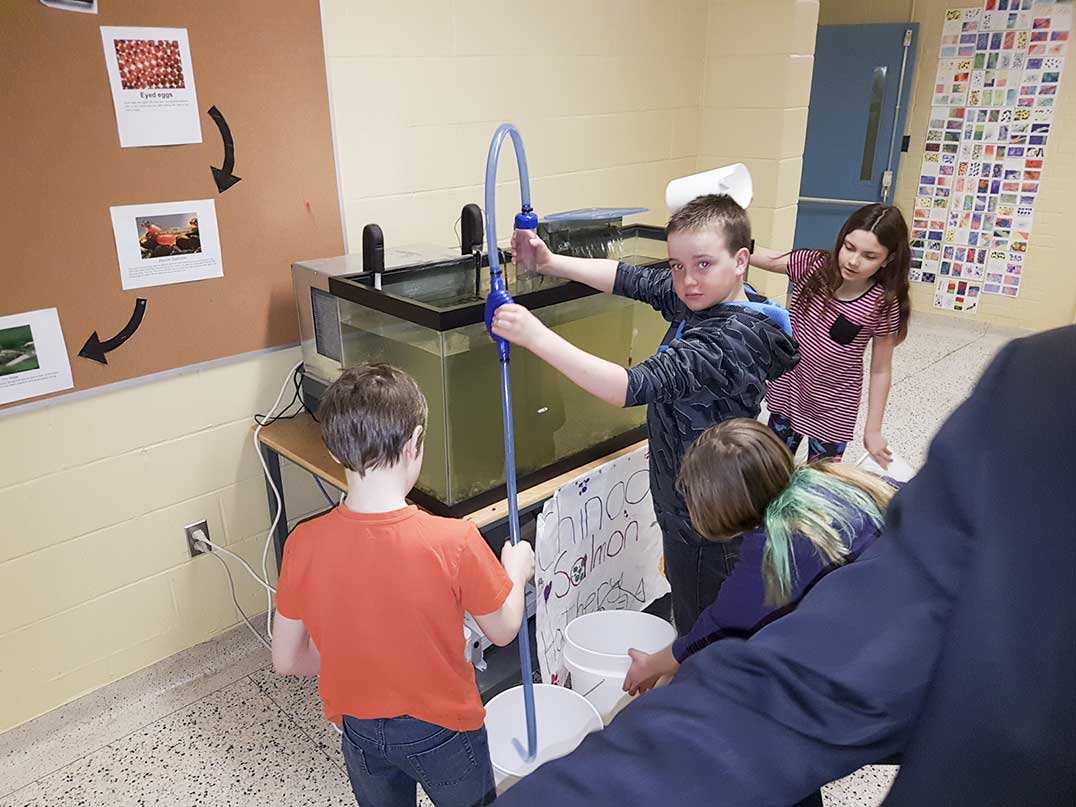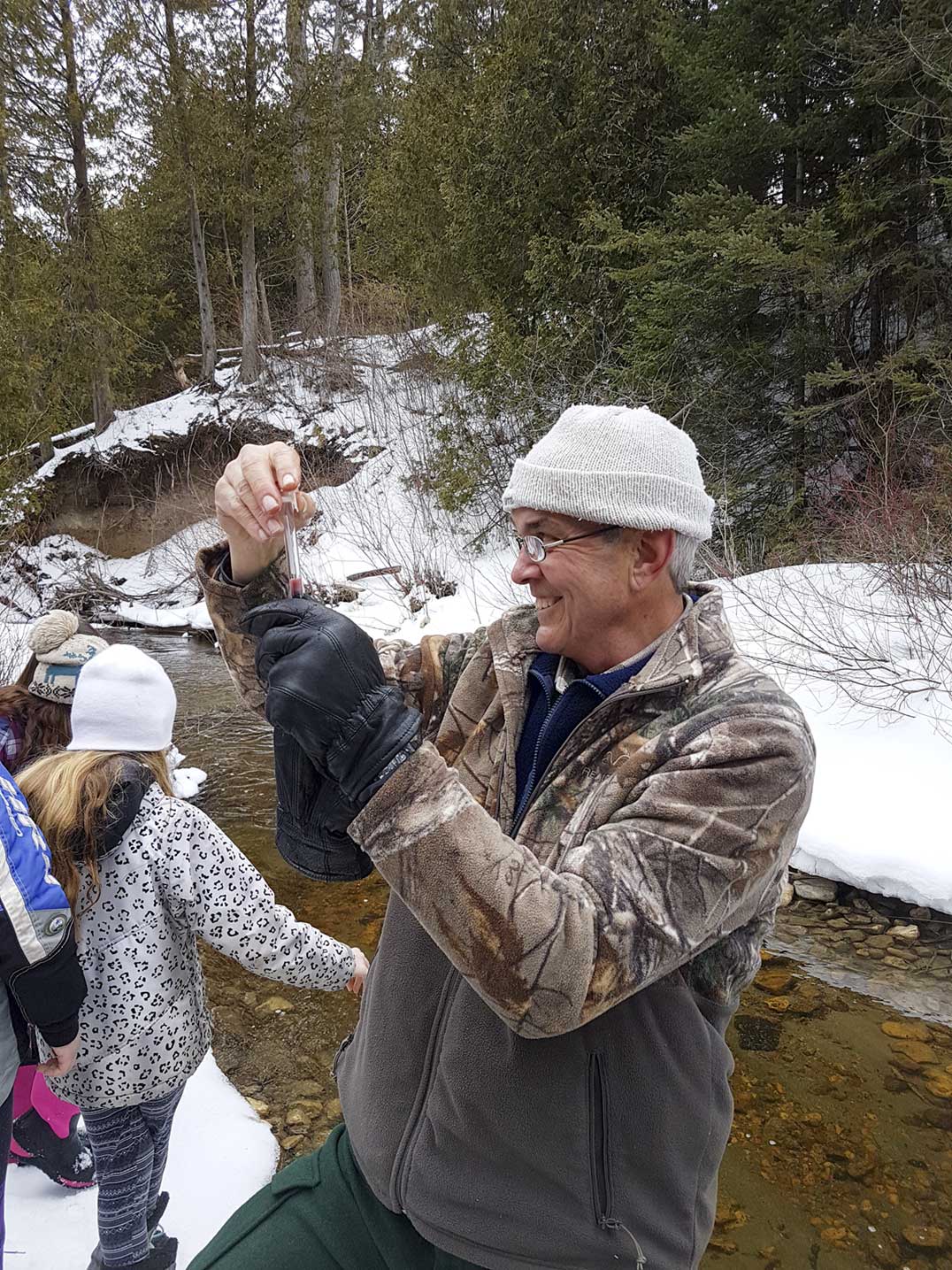MINDEMOYA—Students at Central Manitoulin Public School (CMPS) got the unique experience of being part of the Pacific salmon life cycle, right in their school. Thanks to the Gore Bay Fish and Game Club, CMPS was the recipient of a micro hatchery complete with a state-of-the-art water temperature control unit as well as a battery backup system to buffer against Manitoulin’s somewhat spotty electricity supply.
This cycle started out with the Fish and Game Club netting spawning salmon in October in the Kagawong River. They wanted to capture enough males and females to have the strongest chance of genetic diversity to increase the viability of the fertilized eggs. Ian Anderson, a retired conservation officer, is experienced in this process and explained very well to teachers and students in attendance as he explained the process as he gently mixed the eggs and the milt with a feather.
The eggs were then placed into individual compartments in a Scotty box and closed up while students and staff alike waited for the first hatchlings to swim out of the tiny holes and begin their existence under their own power. The tiny alevin stage of the cycle live strictly from their large egg sack that they emerge from the box with. They nestled amongst the gravel on the bottom of the hatchery to keep themselves upright when they use up their egg sac and they begin to emerge from the stones and swim around looking for food. At this stage they are relatively tiny and hard to count. Tasked with finding out how many had made it to this stage the students came up with a way to estimate their population. After several attempts they settled on 53 fish.

maintenance at the school’s micro hatchery.
The students in the Grade 5 class were also asked to complete an educational display on the life cycle of what was growing in this aquarium. Visiting adults looking at the tank thought these swimmers were anything from guppies to smelt to shiners! Interestingly, even the information found online was deceiving and students had to be careful of what they found. A couple of websites indicated that these salmon would stay in the river for three to four years before they went out to the lake. However, leadership from Mr. Anderson and Principal Wiwchar corrected the youngsters that these smolts would never stay in the river that long and needed to get out into the lake this spring.
As the chinook grew larger they required a lot of care from the students who needed to exchange 20 to 30 gallons of the water in the tank at least once a week and twice a week as they drew close to their release date. Thanks to the sheer mass of the fish and the space they were living in you can imagine that the water clouded over with waste very quickly! Principal Wiwchar’s avocado tree benefited from this rich wastewater and the students loved to deliver to the thirsty plant.

With the salmon growing themselves out of a home Mr. Anderson wanted to make sure that we got the fish into their next stage, the river. In a partnership with Manitoulin Streams, which has done so much work with the M’Chigeeng Creek. Jesse Beaudin set up a release date for last week. Invited elder Lewis Debassige was invited to say some prayers, give thanks and do some teaching to the students and adults invited. The Grade 5 class from Lakeview was invited as they will soon be the Grade 8 stewards of the creek in their annual creek cleanup.
At the stocking site behind the complex everyone was pleased to discover that the hatchery had produced 80 viable smolts to go into the creek and to eventually find their way back out to Lake Huron and hopefully return in four years to spawn and start another life cycle.
The students and staff at CMPS would like to thank everyone involved who allowed for such a rich learning experience for these students and adults!





